There’s no doubt about it: Photography involves a lot of jargon. Whenever you come upon a new word, use this glossary as a reference.
Get a printable version to keep on hand in your studio or camera bag, free! Click here to download the PDF file.
Jump to:
Essential Terminology
Lighting Equipment
Lighting Basics
Color Basics
Camera Modes & Functions
Camera Technology
Techniques
Equipment
Essential Terminology
Aperture
The lens opening that allows light reach the camera’s sensor. The adjustable opening is measured in f-stops. Smaller f-stop numbers (f/2.8, f/3.5) represent larger apertures and larger f-stop numbers (f/18, f/22) represent smaller apertures. Aperture controls depth of field, with smaller apertures having greater depth of field. Learn more »
Cropping
Trimming the edges of an image to adjust the composition and framing. Learn more »
Depth of Field
How much of the background and foreground are acceptably sharp for any given image, measured in distance. Depth of field is dependent on aperture and focal length. Wider apertures have shorter depth of field, while smaller apertures have greater depth of field. Learn more »
Exposure
The combination of the amount of light (brightness of ambient light and/or flash), ISO, aperture and shutter speed. A proper exposure evenly balances each of these elements and can be accurately determined by a light meter. Learn more »
Exposure Compensation
The camera user can compensate for an incorrect automatic exposure reading by adjusting a number of stops or fractions of stops. This is usually helpful in very bright or very dark conditions. Learn more »
f-stop
The measurement for the aperture opening. Smaller f-stop numbers (f/1.2, f/2.5) equal larger aperture openings and larger f-stop numbers (f/22, f/32) equal smaller aperture openings.
Focal Plane
The plane that is perpendicular to the axis of the image sensor and is most sharply in focus.

ISO
A measure of film speed or sensor sensitivity originally created by the International Organization for Standardization. Higher ISOs have greater sensitivity or faster speeds, but less quality. The quality decrease causes graininess, noise and loss of sharpness and saturation. ISO affects the necessary aperture and shutter speed for a proper exposure. Most cameras have a “native” ISO setting of 100 or 125. Learn more »
JPEG
A compressed file format that allows for smaller file sizes. The format is “lossy,” which means that some file information is lost for the sake of size. The amount of compression varies, more compression decreases quality.
Lens
Formed glass that allows light to pass through to the image sensor or film.
Light Meter
A device that measures light to calculate the correct exposure settings. Light meters can be in-camera or a standalone, hand-held device. Learn more »Metering
Calculating the correct exposure based on available lighting. Metering can be done in-camera or with an off-camera light meter. Several different metering methods are usually available in-camera: Matrix or Evaluative Metering, Center-Weighted Metering and Spot Metering. Learn more »
Noise
The digital equivalent of grain, found in images captured at higher ISO speeds. Noise is generally unwanted and reduces detail in an image.
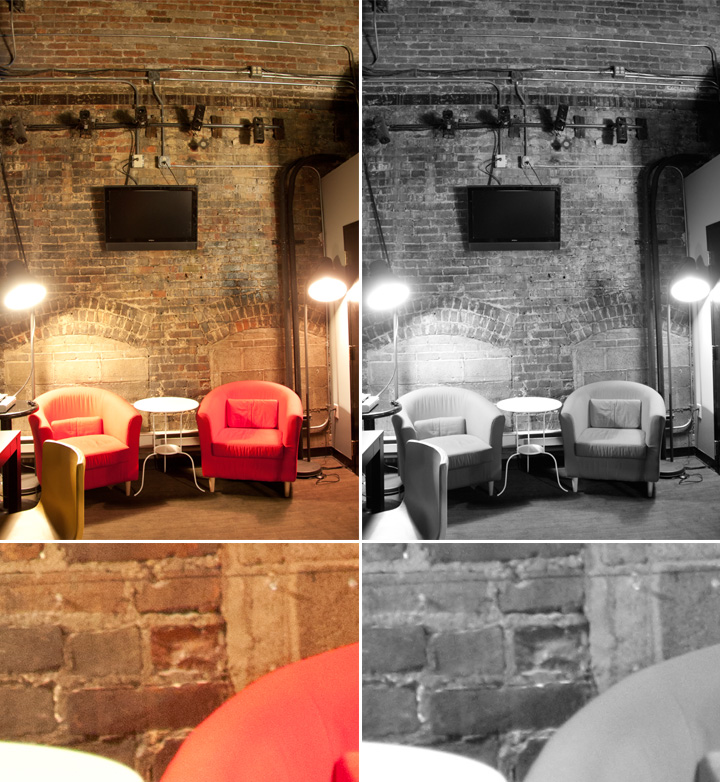
Noise Reduction
A post-processing solution to compensate for unwanted noise in images shot at higher ISO speeds. Learn more »Overexposing
Taking a photo with a brighter-than-average exposure. On a histogram, the peaks skew toward the right with more pixels in the highlight areas.
RAW
A file format that captures image information as the sensor sees it, which allows for editing latitude far beyond other file formats. RAW files can be edited in 16 bits, allowing for additional capability over JPEG or other lossy file formats. RAW files can be processed multiple times, as the original file stays unaltered.
Resolution
The number of pixels in an image. Higher-resolution images have more detail and can be reproduced at larger sizes.

Rule of Thirds
A compositional rule in which the frame is divided into horizontal and vertical thirds, creating a grid of nine boxes. The rule says that the subject or focus point should fall on the grid lines or at intersections of the grid lines. Learn more »
Sharpening
Increasing the contrast between edges in a photograph to make them more defined.
Shutter
The mechanical or electronic part of a camera that controls the duration light reaches the image sensor.
Shutter Speed
The length of time that a shutter remains open and light reaches the sensor or film. Learn more »
Underexposing
Taking a photo with a darker-than-average exposure. On a histogram, the peaks skew toward the left with more pixels in the shadow areas.
White Balance
The process of removing color casts in an image. An image can be too warm (orange/yellow) or too cool (blue/purple), and white balance adjustments compensate for the color of the light by identifying white objects that don’t appear white. Learn more »
Watermark
Text, a logo or another graphic placed over an image to deter theft of a digital file. Learn more »
Lighting Equipment
Barndoor
A lighting accessory that directs light and prevents light spill. Barndoors have four adjustable leaves, which are mounted in front of the light source for precise control in all directions.
Beauty Dish
A medium-sized lighting modifier that’s shaped like a dish and made of metal or plastic. The inside of the dish is usually white or silver and reflects light onto the subject. The size softens the light and the shape gives it a crisp quality. Beauty dishes can be used with grids or diffusion socks to further modify the light.
Boom Arm
Used in conjunction with a light stand, a boom arm allows for extension at various angles beyond the stand’s feet. It’s helpful for removing light stands from the frame while keeping light sources close to or above the subject.
Bounce Card
A white card on the top of a speedlight. It’s used to bounce some of the light forward when the flash is pointed straight up.

A C-Stand (left) and a tripod stand
C-Stand / Century Stand
A heavy-duty, three-legged stand used in commercial productions to hold lighting equipment. They are designed to break down easily and store well.
Compact Fluorescent Light (CFL)
A light bulb that’s more energy efficient than older incandescent counterparts.
Diffuser
A white fabric that acts as a filter for light. Diffusers redistribute light rays and often make light sources larger in area relative to the subject. They also decrease the output, or power, of the light source.
Diffusion sock
A diffusion fabric placed on the front side of a beauty dish to further soften the light.
Fill light
A secondary light source that is less powerful than the main or key light and acts to fill in shadows.
Flag
An item that blocks part of the light, controls spill or cast a shadow. A flag is typically black to avoid reflecting light.
Flare
A lens creates flare when light is reflected off the inside edges of the aperture. This typically happens when an intense light is within or just outside the composition. Learn more »
Flash
A light source with a short duration — typically just a fraction of second. A flash unit stores energy in a capacitor and lets it out very quickly as a burst of light to affect exposure. Flash units can be placed on or off the camera.
Fluorescent Light
Light that emits from common overhead lamps that would be found in an office, store or warehouse. The color temperature appears slightly cool because of a green cast, but is close to daylight color balance at about 4,000 – 5,000 degrees Kelvin.
Gel
A colored piece of gelatin placed over a light source to modify the color temperature or tint of the light. Gels are often used to gain consistency when using multiple light sources of varying colors.
Gobo
An item that stands between the light source and subject to block part or all of the light and cast a shadow. A gobo is typically black to avoid reflecting light.
Grid
A piece of metal or plastic with a grid pattern, placed over a light source, to decrease the angle of output and to control light spill. Grids are labeled by the angle of their output.
Hair Light
A light directed from behind a subject that creates a glow around the rim of their head. Also called a rim light.
Hot Shoe
The mount on top of a camera that supports flashes, transmitters, monitors and other accessories. Hot shoes allow the camera to communicate with accessories digitally, while cold shoes simply hold the accessories.
Hotspot
An area of a photo that is significantly overexposed, usually found on reflective objects.
Incandescent Light
Light that emits from tungsten wire filament light bulbs — the kind that would be found in a lamp at home. The color temperature is on the warm side of the spectrum, often between 2,500 – 3,500 degrees Kelvin.
Key Light
The primary light source in a composition, usually the strongest or most intense light. Also called the main light.
Kicker
A light behind a subject, which creates a glow around their head or body and helps to separate them the background.
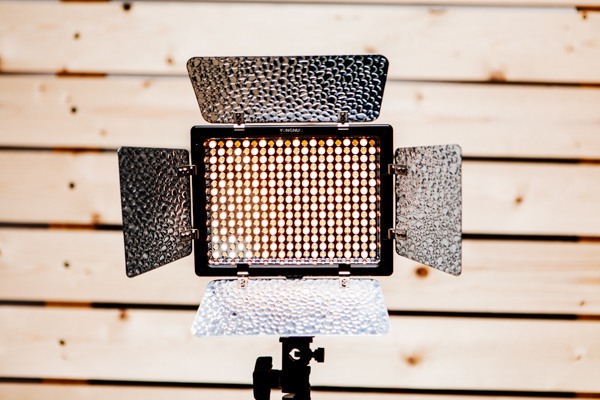
LED – Light Emitting Diode
A continuous light with very low power consumption for the output. Learn more »
Lens Hood
A protective piece of plastic that helps to reduce lens flare by blocking some light.
Master
A flash mode where one flash unit controls other flash units through the use of infrared signal or radio frequency.

Modeling Light
A continuous light built into a flash unit that helps to “model” or replicate the direction, shape and quality of light that will be seen while using flash.
Monolight
A flash unit that is less portable but more powerful than a speedlight. Monolights (also called strobes) usually need to be plugged in to AC power and thus recycle very quickly. They also typically have built-in modifier attachment abilities and include modeling lights.
Monopod
A one-legged stand used to stabilize a camera for long shutter speeds and support heavy equipment for long periods of time. Monopods are less stable but lighter and more portable than tripods.
Neutral Density Filter
A lens filter that reduces the amount of light entering the camera. These filters do not affect color, but they do require adjusting exposure settings. They are helpful in bright light or long exposures. ND filters are measured in f-stops, with ND 0.3 = 1 stop, ND 0.6 = 2 stops, ND 3.0 = 10 stops, etc.
Pack and Head
A strobe light with two parts: the flash tube and a power pack to supply the electricity. By contrast, a monolight has everything built into one casing.
Parabolic Umbrella
A parabola-shaped light modifier that offers a soft but focused output of light.
PC Sync
A type of cable that connects cameras to off-camera flashes.
Polarizing Filter
A colorless lens filter that reduces glare and reflections from surfaces like water or glass. Polarizing filters can also increase color saturation, especially the sky.
Reflector
An object used to reflect and change the quality of light. Reflectors are often white, silver (which do not affect color) or gold (which warms the color of the light). Silver tends to be a more efficient reflector. Reflectors can be umbrellas, foldable fabrics or as simple as a sheet of paper.
Ring Light
A ring-shaped light that goes around a camera lens. Ring lights create the interesting effect of almost eliminating visible shadows from a composition.
Scrim
A material that decreases a light source’s intensity by obscuring some of the light. Often made of wire mesh, a scrim looks like a grid or diffuser but does not perform the same functions.
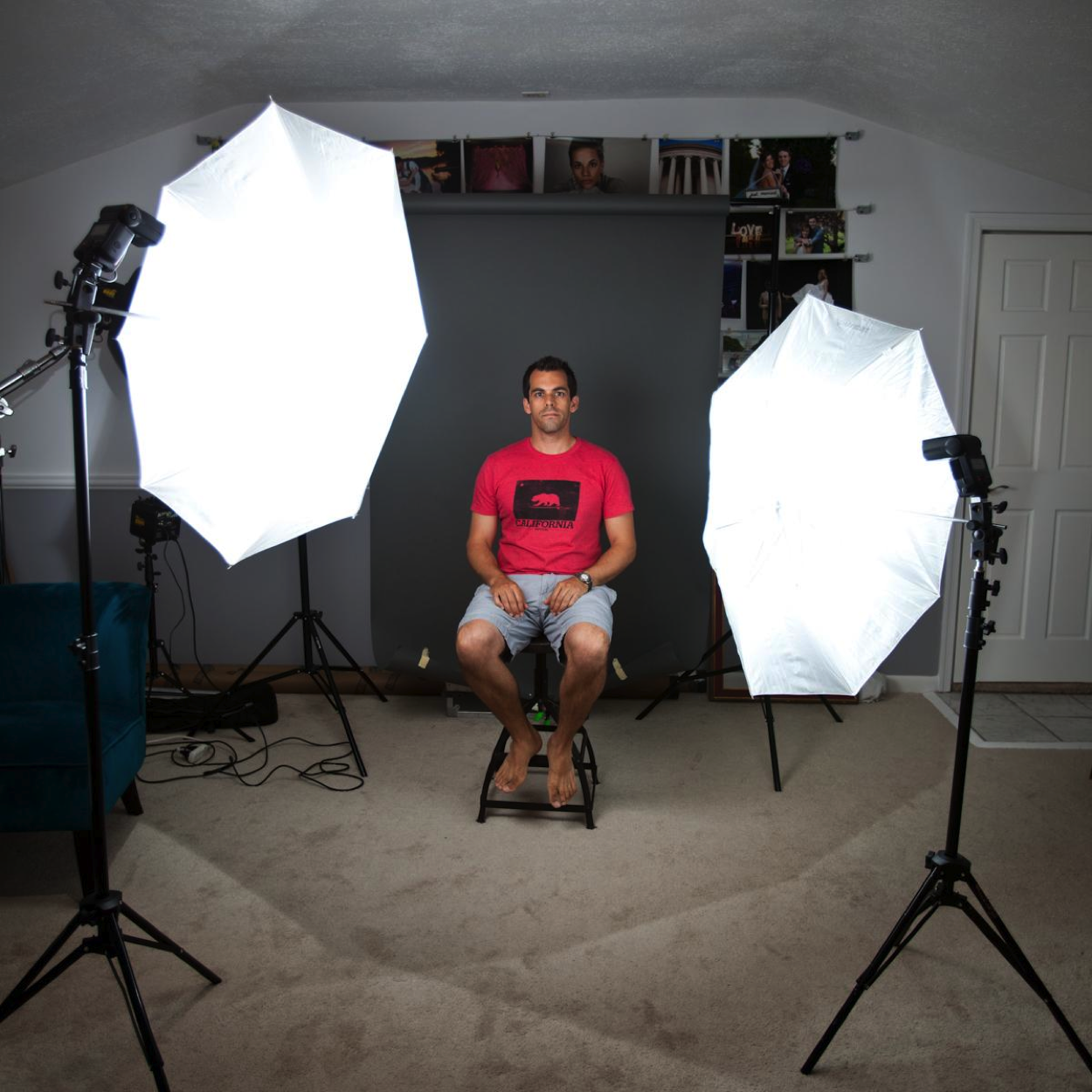
Shoot-Through Umbrella
An umbrella made of white diffusion fabric that can be placed between your flash and subject to diffuse the light. A very cost-effective light modifier to soften light.
Slave
A flash unit that is controlled by the master flash unit.
Snoot
A cone-shaped light modifier that points and isolates a beam of light, controlling spill.
Soft Box
A rectangular, box-shaped light modifier with a white diffusion fabric on one side. The inside is a reflective silver material, which reflects the light and sends it through the diffusion fabric. Soft boxes soften the light and can replicate natural window light.
Soft Light
A light produced by a large source or a source close to the subject. Soft light is characterized by smoothly gradated shadows.
Speedlight
A portable flash unit used in conjunction with a camera’s hotshoe. Speedlights are battery powered but can also be used with external power sources. Learn more »
Strip Light
A soft box that is much wider in one dimension than the other, producing a strip of light. A strip light is handy for product photography and portraiture.
Umbrella Adapter
A metal or plastic piece that mounts a speedlight and umbrella to a light stand. The adapter usually points the light toward the center of the umbrella and pivots vertically at an angle.
V-Flat
A type of flag (light blocker) that stands on its own in the shape of a V. Often made of something rigid like foam core board or wood.
Lighting Basics
Ambient Light
The light that naturally occurs in a scene before introducing of flash. Ambient light can come from natural sources like the sun or moon, or artificial sources like overhead lighting, lamps or reflections.
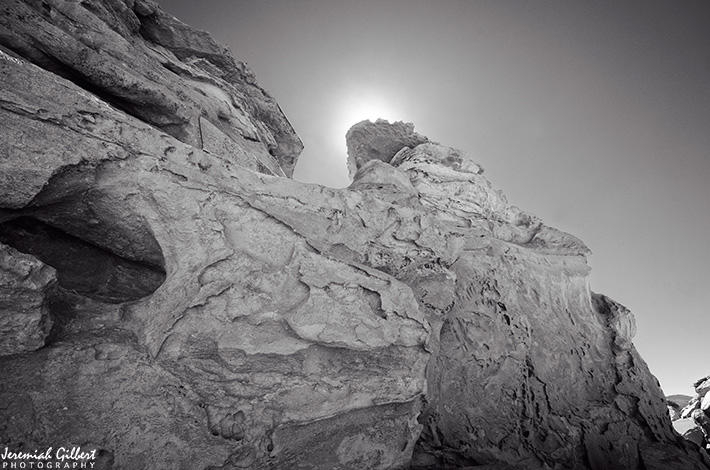
Backlighting
When the subject of an image is lit from behind. Learn more »
Blown Out
When an image is overexposed and the highlight areas lose detail. Blown-out highlights are difficult to correct digitally, but are more forgiving for film.
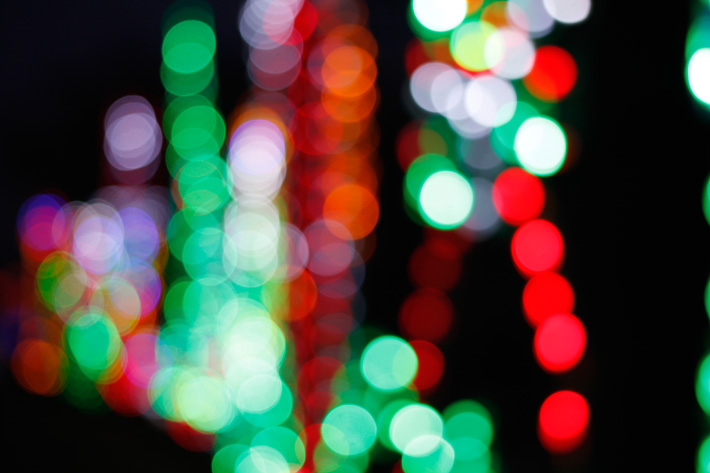
Bokeh
The quality of the out-of-focus areas in a photograph, particularly in images with very shallow depth of field. Bokeh is caused by the shape of the opening of the lens aperture. Bokeh is commonly described as soft, smooth and rounded. Learn more »
Catch Light
A reflection of the light source seen in a subject’s eye. It is a desirable effect in portraiture, used to place emphasis on the eyes with a specular highlight.
Dynamic Range
The range of tones that an image sensor can capture, representing values from shadows to highlights and everything in between. A wider dynamic range results in more detailed images that have both dark shadows and bright highlights. If your image has shadows that are completely black and highlights that are complete white, you have gone beyond the limitations of your camera’s dynamic range. Learn more »
Feathering
Placing a light source at an angle that affects a subject without pointing directly at it. Feathering can make photographic lighting more subtle and interesting. It can also replicate ambient light sources, as ambient lights are rarely directed right at a subject.
Flash Duration
The amount of time it takes for a single flash to pulse from a flash unit, measured as t.5 time (the time it takes for 50 percent of flash power to dissipate) and t.1 time (the time it takes for 90 percent of flash power to dissipate). The shorter the time, the greater the photographer’s ability to freeze the motion of a subject.
Front Curtain Sync
A mode used when a camera and flash are used in conjunction, causing the flash to fire directly after the first shutter curtain opens.
Golden Hour
The period of time right after sunrise and right before sunset where the sun is low and ambient light is warmer and softer than the middle of the day. Learn more »
Hard Light
A light that is produced by a small source or a source that is a great distance from the subject. Hard light is characterized by very defined shadows. Learn more »
High Speed Sync
A flash mode that works around the limitations of sync speed, allowing use of flash with a fast shutter speed on a DSLRs. The flash unit pulses light over time rather than one single burst. Learn more »
Highlights
The lightest parts of an image, which are white or almost white.

Histogram
A graphic representation of the distribution of tones in an image. Shadow areas appear on the left and highlights appear on the right. Peaks in the graph show more pixels of a tonal value, while valleys show fewer pixels of a value. Learn more »
Infrared
Technology that uses light below the visible spectrum to transfer a signal. The signal transfer is limited to line of sight, meaning the transmitters and receivers must be within sight of one another. Infrared technology is commonly used in flash units and to help with autofocusing.
Midtones
The middle part of the tonal spectrum, between the highlights and the shadows.
Natural Light
Light that occurs without additional lighting equipment. Natural light comes from the sun or moon and is diffused or reflected by objects like windows and walls. Learn more »
Rear Curtain Sync
A mode used when a camera and flash work in conjunction, causing the flash to fire directly before the second shutter curtain closes. Also called Second Curtain Sync.
Shadows
The darkest parts of an image, which are black or almost black. Learn more »Specular Highlight
The brightest spot of light on a shiny object, specular highlights provide a visual cue for the location and shape of a light source. Specular highlights often appear as catchlights in portraiture.
Spill
Light that unintentionally affects your photograph.
Vignetting
Darkened corners and edges in a photograph. This can result in a camera due to wide apertures or poor lens quality. It can also be added in post-production to pull the eye toward the center of the photo. Learn more »
Color Basics
CMYK – Cyan, Magenta, Yellow, Black
The four colors used in the standard printing process to reproduce full-color images. Cameras record images in RGB (red, green, blue), so images must be converted to CMYK before printing to retain accurate colors.
Color Temperature
A scale used to measure the color of light in degrees Kelvin, ranging from warm (about 800 – 3,200 K and yellow/orange) to cool (7,000 – 10,000 K and blue). Daylight or flash is neutral at about 5,500 degrees K. Learn more »
Desaturated
A photograph that has the saturation (color) fully or partially removed.
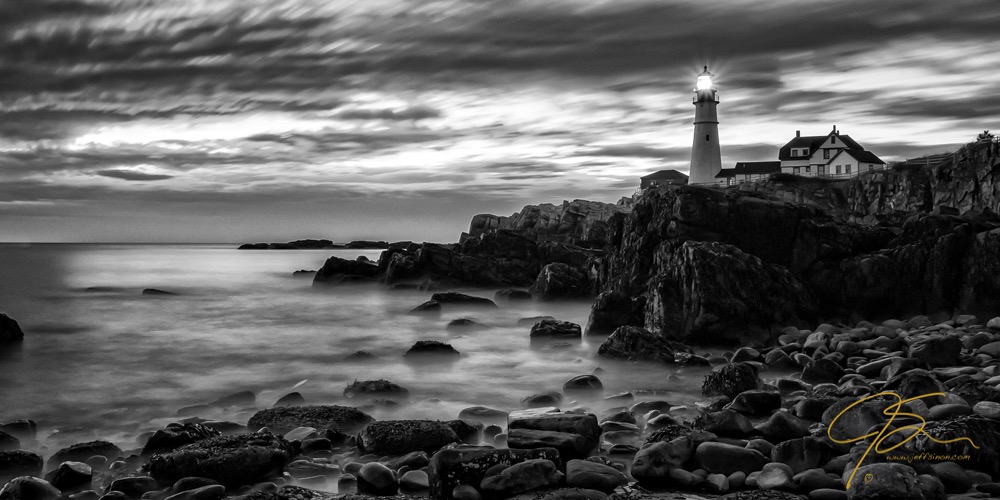
Grayscale
Also known as a black and white image, grayscale contains multiple values of gray but no colors. Learn more »
RGB – Red, Green, Blue
The colors that comprise a full-color image with an image sensor. Different combinations of each of the colors make up all the colors that can be seen on an LCD, monitor or other display.
Camera modes and functions
AF Servo
An autofocus mode that allows for continuous focus (as opposed to locking the focus) on a moving subject as the camera’s shutter release button is partially pressed. Good for fast-moving subjects.
Aperture Priority
A light-metering mode where the photographer sets the aperture and the camera automatically sets the shutter speed to create a proper exposure. This mode lets you control depth of field quickly in various lighting conditions. Learn more »
Auto Exposure (AE) Lock
A camera function that locks the exposure while you recompose a photo. You can enable AE lock by pressing the shutter halfway or using a dedicated button on the back of the camera.
Autofocus (AF)
The camera automatically adjusts the focus for the lens. Learn more »
Automatic Mode
A fully automatic camera mode that calculates shutter speed, aperture and ISO for a proper exposure without input from the photographer.
Average Metering
A metering mode where the camera accounts for all the light in a composition and calculates its average exposure. This is a good setting for photos with an even balance of highlights, mid-tones and shadows.
AWB
An acronym for Automatic White Balance, which allows the camera to decide the appropriate white balance settings based on the ambient light and the presence of a flash.
Bulb
A camera setting for exposures lasting longer than 30 seconds. In this mode, the shutter opens when the shutter button is pressed and closes when the button is released. A remote release helps to take full advantage of the bulb setting.
Center-Weighted Metering
A metering mode that puts more weight on the center of the frame when calculating the meter setting. The focus point does not affect the light metering.
Evaluative Metering
Also known as Matrix Metering, this fully automatic camera mode takes many different factors into account, including focus, color, shadows, highlights and different “zones” in a scene. Some systems also use an image reference library to help determine the best metering.
Manual Mode
The exposure setting where the photographer controls all variables, including aperture, shutter speed and ISO. Learn more »
Recycling Time
The time it takes for energy to transfer from a power supply to a capacitor in a flash unit. Every time the flash is fired, the capacitor empties and must be refilled before the flash can fire again.
Shutter Priority
A camera mode in which the shutter speed is fixed and correct exposure is achieved by a varying the aperture setting. Learn more »

Spot Metering
A light-metering mode where the metering is calculated around one focus point rather than the entire image. Spot metering is helpful in more extreme lighting conditions.
TTL – Through The Lens
A metering system that automatically accounts for proper exposure and adjusts flash output based on exposure readings. Learn more »
Camera Technology
APS-C
Also known as a “crop sensor,” this describes the size of the image sensor in a camera. It is about half the size of 35mm film or a full-frame sensor. These sensors typically have a 1.5x or 1.6x magnification factor, meaning a 100mm lens on an APS-C will effectively act as a 150mm or 160mm lens.
Aspect Ratio
The image proportions created by a camera. Most cameras are set to default to 3:2, meaning the image is 3 pixels wide for every 2 pixels tall. Aspect ratio can be adjusted for final output. Learn more »
Buffer
A camera’s built-in buffer memory holds image data before it is transferred to a memory card. A buffer allows the photographer to take more photos than can be written to the memory card in the same amount of time.
Burst
The number of photos a camera can take in quick succession before its temporary buffer memory reaches capacity. Burst mode allows you to take multiple photos when the shutter button is held down for several seconds.
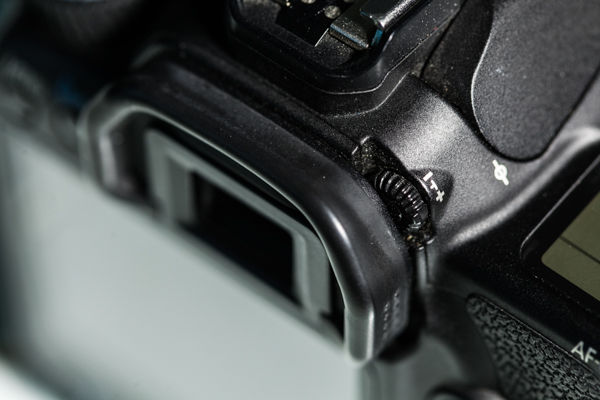
Diopter
The part of a camera’s viewfinder that adjusts to correct for individual eyesight. Helpful for photographers who ordinarily wear glasses. Learn more »
Dots Per Inch (DPI)
Also know as Pixels Per Inch (PPI). The DPI needed depends on how image will be reproduced. On a computer screen, you generally only need 72 DPI. In print, we aim for 300 DPI. For example, a 720-pixel image can be shown at 72 DPI and will appear to be 10 inches big; a 900-pixel image at 300 DPI will only print at 3 inches.
Electronic Viewfinder (EVF)
A camera viewfinder that electronically captures the lens’s field of view. An alternative to an optical viewfinder, where the photographer sees through a physical lens.
High Resolution
Digital images that have a relatively large number of pixels. They are typically used for printing and are usually able to be printed at least several inches long at 300 dpi.
Image Stabilization
A system of stabilization (also called vibration reduction) that allows several extra stops of shutter speed before blurriness is seen in an image. For example, you could take a photo at 1/15 of a second with image stabilization instead of 1/60 second without. The system usually employs a floating element within the lens that moves opposite of the camera movement. Learn more »
Live View
Seeing exactly what the image sensor is seeing, almost exactly at the same time, on the camera LCD screen. Live View mode allows you to compose a picture without using the viewfinder.
Mirrorless
A camera technology that uses an electronic viewfinder (EVF) instead of a mirror reflex viewfinder.
Shutter Lag
The time it takes from the shutter button being pressed to the photos being actually taken. In lower-quality cameras or point-and-shoot models, lag can be a problem.
Sync Speed
The fastest shutter speed that a camera can sync with a flash. This is the speed right before the first and second curtains start moving simultaneously, often around 1/200 or 1/250 of a second.
Viewfinder
The part of a camera that allows a photographer to compose and focus an image before taking a photograph. Viewfinders can be optical, electronic or back-of-camera LCD.
Techniques
Bracketing
Taking multiple exposures of the same subject in quick succession, so that some images are underexposed, some are overexposed and some are evenly exposed. Usually a camera lets you choose the bracketing increments (½ stop, 1 stop, 2 stops, etc.). Bracketing is helpful when the photographer is unsure of the correct exposure or is planning to create an HDR (High Dynamic Range) image.
Double exposure
Exposing a single frame twice with different images.
Drag the Shutter
Holding the shutter open longer than normal to add more ambient light to the image. This creates blur for artistic effect or to show motion. Learn more »
Focus Stacking
Compositing images to account for narrow depth of field. In macro photography, even at small apertures, the depth of field is too narrow to get an entire object in focus. Focus stacking solves this problem by taking multiple images and compositing together the in-focus parts and removing the out-of-focus parts. Learn more »
Image Sensor
The part of a digital camera that collects and records light data. The equivalent part of a film camera is the film itself.
Inverse Square Law
The formula for calculating the falloff, or decrease in intensity, of light over a distance. The intensity of light at any point is inversely proportional to the square of the distance from the source.
Light Painting
The process of moving a light source during a long exposure to either cover a subject in light or to show the movement of the light as a light trail.
Panorama
An image created by taking several photos and stitching them together in post-processing. Panos are often wide and are typically used for landscapes. Some cameras have built-in panorama software.
Sunny 16 Rule
A quick way of guessing exposure settings outdoors on a sunny day. Start with the aperture at f/16 and set the shutter speed to a fraction corresponding to the ISO speed. Example: 1/200 second for ISO 200, 1/800 second for ISO 800.
Equipment
Apple Box
A wooden box used in photo studios to increase the relative height of either the photographer or the subject. They come in several standard incremental sizes — 8”, 4”, 2” and 1” — for easy stacking.
Chroma Key
A uniform color that can be easily selected and removed in post-processing. Chroma keys are also known as green screens because green is a common color for the chroma key backdrop.
Cyclorama
A architectural feature where a wall meets the floor in a gently rounded curve, which blends the wall and floor together seamlessly. This is a popular feature in photo studios.
Fisheye
A type of lens that creates an unrealistically wide field of view, up to 180 degrees. Due to the extreme wideness, the image appears distorted in an interesting way.
Graduated Filter
A lens filter that has a graduated effect. Often used for landscape photography to affect only part of the image.

Macro Lens
A lens that is capable of focusing closer distances than a normal lens, capturing objects up to life-size on the image sensor. Used for photography of very small subjects and details. Learn more »
Normal Lens
A lens with a normal field of view that approximates what the human eye sees naturally. The most common focal length for a normal lens is 50mm.
Pancake Lens
A flat and compact fixed focal-length lens.
Prime Lens
A lens with a fixed focal length.

Radio Trigger
A device that uses radio frequency to transmit a signal, commonly used to trigger flash units or camera shutters remotely. Unlike infrared technology, radio does not need line of sight and can be used through walls and at greater distances. Learn more »
Teleconverter
An optical element that attaches between the camera body and lens to increase the focal length. For example, a 2x teleconverter would turn a 200mm lens into a 400mm lens. Learn more »
Telephoto lens
A lens with a narrow field of view and a higher-than-normal level of magnification, typically greater than 67mm on a full-frame sensor. Learn more »
Tilt-Shift Lens
A specialized lens that allows you to tilt the plane of focus and to shift the lens parallel to the image plane. These effects give focus control and perspective control, and they are especially useful for landscape and architectural photography. Learn more »
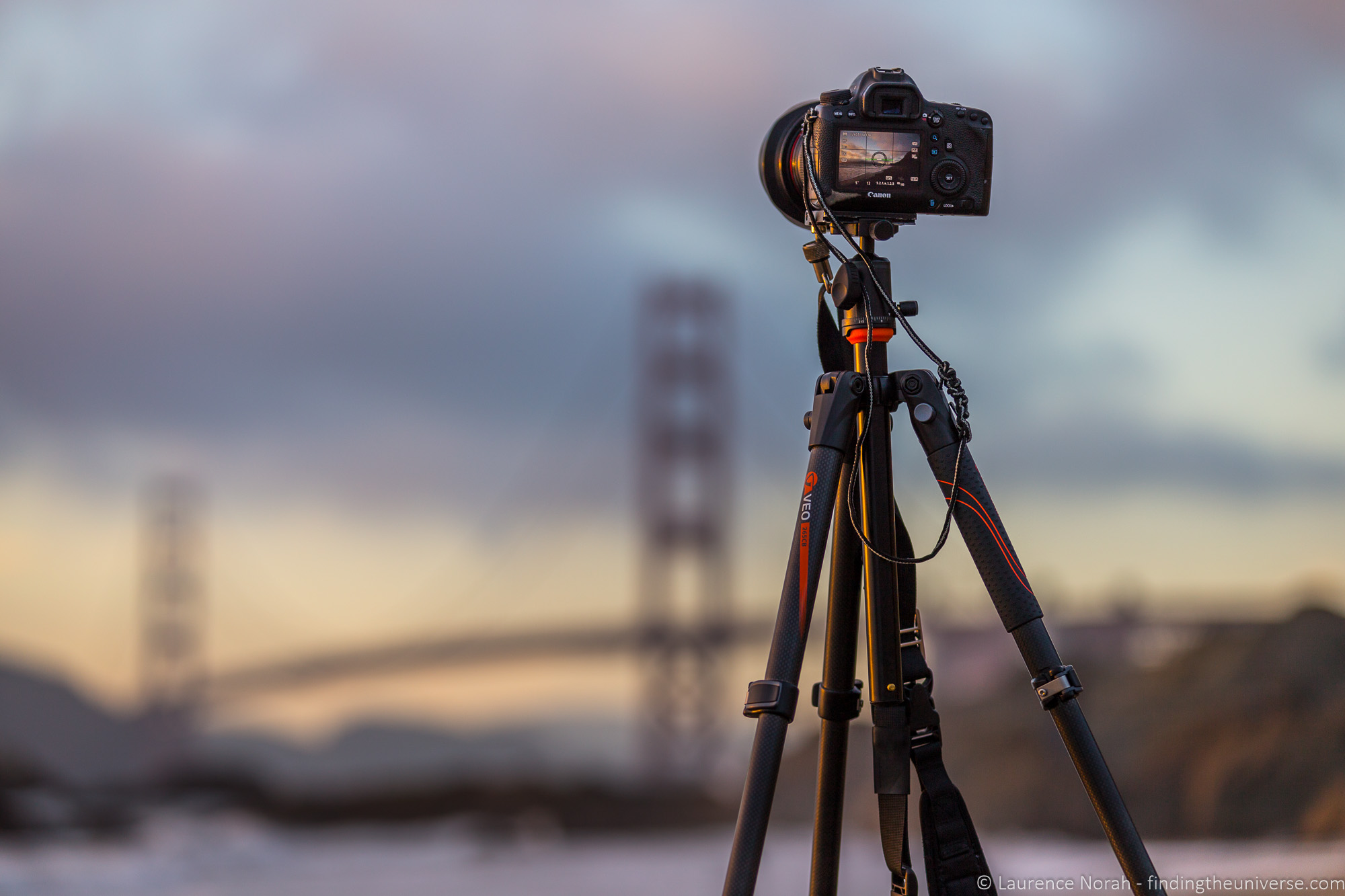
Tripod
A three-legged stand for a camera, used to stabilize cameras. Tripods are one of the most cost-effective tools to increase your capabilities with a camera. Learn more »
Seamless
A roll of paper used as a backdrop. Unrolling it creates a background that blends the wall to the floor, appearing without a seam.
UV Filter
A colorless lens filter that eliminates ultraviolet light from reaching the image sensor, commonly used as a protective element for the front glass on a lens.
Wide-Angle Lens
A lens with a wide field of view and a lower-than-normal level of magnification, typically less than 35mm on a full-frame sensor. Learn more »
Zoom Lens
A lens with a range of focal lengths.
Get a printable version to keep on hand in your studio or camera bag, free! Click here to download the PDF file.
This is just the beginning!
Take better photos today with key DSLR techniques! Master your camera’s features & photography basics for beautiful shots you’re proud to share in Bluprint’s most popular online photography class, Basics of Digital Photography.
Simply click the button below to enjoy expert-taught HD video lessons you can enjoy anytime, anywhere, forever. With a 100% money-back guarantee, there’s no reason not to try!

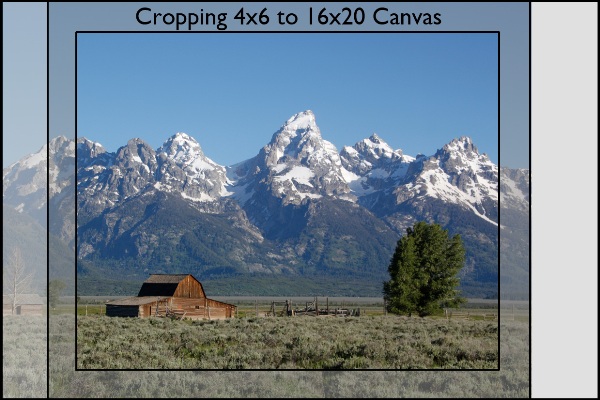
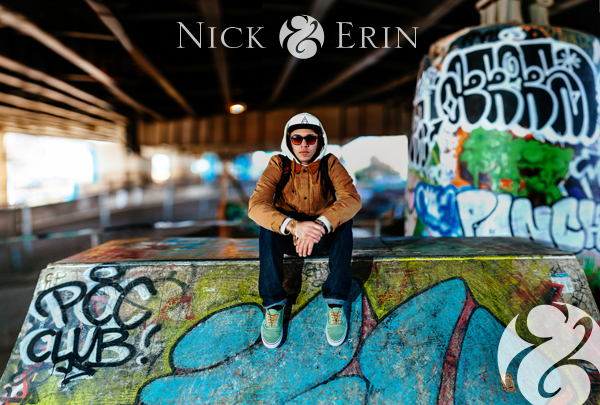

Share tips, start a discussion or ask one of our experts or other students a question.
No Responses to “The Ultimate Photography Glossary”